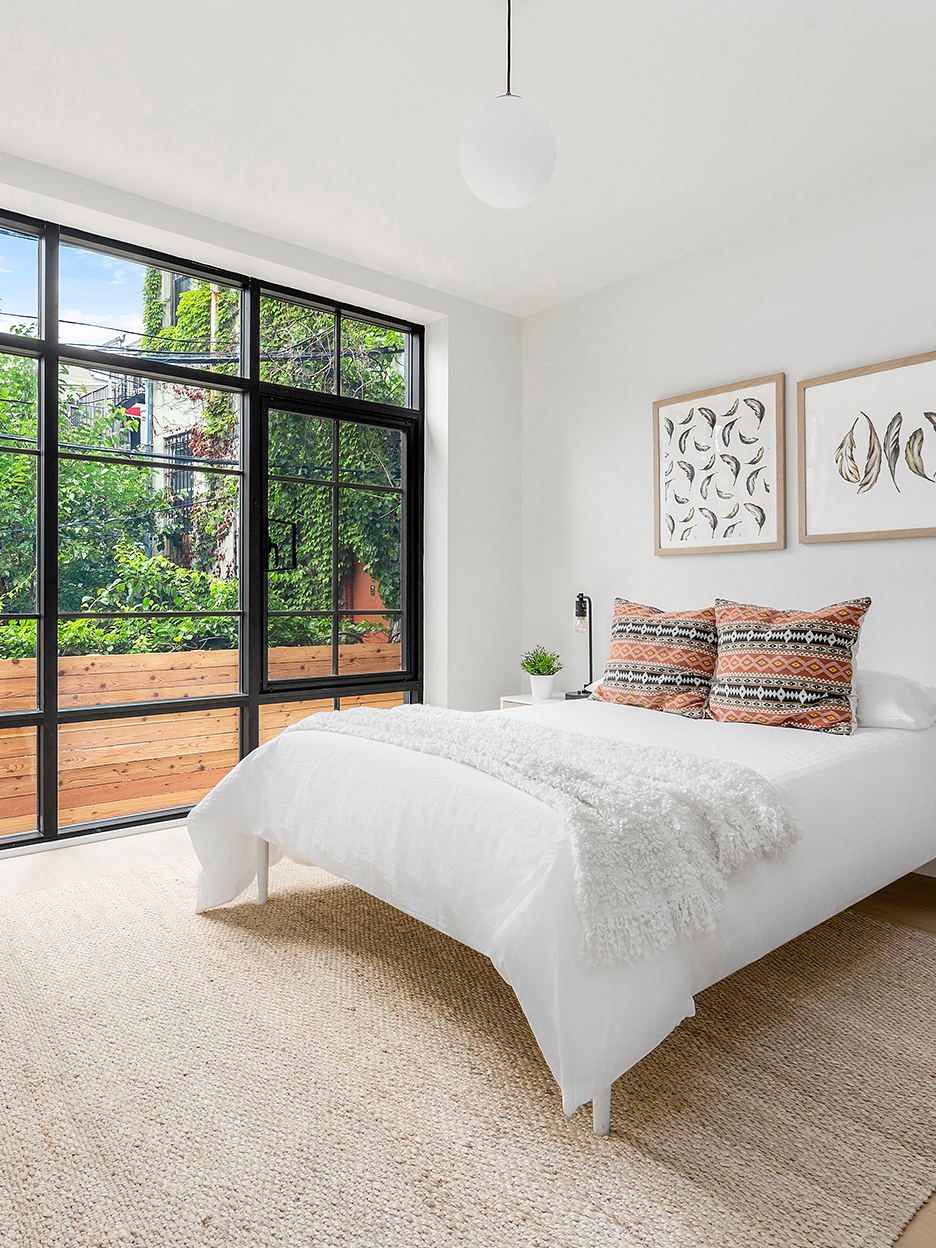We may earn revenue from the products available on this page and participate in affiliate programs.
Carlos Saavedra and Nicole Eckstrom aren’t afraid of creeping mold or dodgy electrical wiring. With more than 20 years of combined experience, the married couple (and cofounders of Eckstrom NYC, a real-estate development business) knows a thing or two about giving a run-down building a new lease on life, all while maximizing their bottom line.
That doesn’t mean slapping builder-grade finishes all over, though. Through trial and error, the duo has learned exactly where to spend their hard-earned dollars (and where to save a few bucks). Gut jobs have many moving parts—and rarely come without a few surprises. But with proper groundwork, you can get your dream kitchen and stay within budget. Here are the little-known secrets that will help you get there.
Nail Down Your Design at the Beginning
Change order are two little words that will almost always blow your budget. Saavedra advises planning every last detail before the demo starts to avoid hearing them: “Let’s say you want to put this beautiful Viking stove in your kitchen, but you didn’t leave enough space for the plumbing or the insert. You’ll end up trying to retrofit everything. It really adds up.” You also risk losing the respect of your contractor, which can result in tension and delays.
Read Up on Basic Dimensions
Saavedra recommends having the standard heights for things like kitchen cupboards (30 or 39 inches), windows (60 inches), and doors (80, 84, or 96 inches) on hand. “It’s worth knowing those numbers, because vendors won’t tell you if you’re ordering a custom size, they’ll just charge you more,” he says. For the same reason, be aware of the default thickness of countertops (1.5 inches), Sheetrock (0.75 inches), and tile (6–8mm), too.
Stay on Top of Timelines
Be aware of the different stages of a renovation to avoid accidental shipping delays: After demo comes plumbing and electrical, then Sheetrock and bathrooms: “One of the first things a contractor will need from you is your toilets, bathtubs, faucets, shower fixtures, and tiles,” says Saavedra. After that, you’ll have to provide doors, floors, and windows (kitchen fixtures are typically left to the end). Try to have as much on-site in advance as possible; if your materials are delayed, the contractor may end up turning to another project, leaving you without a fully dedicated professional when they finally arrive.
Search for Comparable Properties in Your Area
When planning a renovation, one of the questions that often comes up is: Will I lose money on the resale of my home? For the answer, Saavedra suggests looking for comparable properties (recently sold homes with similar square footage and number of bedrooms and bathrooms) in your area and finding out what they’re selling for. Subtract your purchase price from the selling price of similar renovated places in the neighborhood to give you a sense of what your renovation budget should be. For example, if you purchased your place for $400,000 and similar homes are selling for $500,000, you probably shouldn’t spend more than $100,000 on a remodel.
Bundle Your Appliances
It can be tempting to splurge on a statement range, but Eckstrom suggests buying everything from the same brand and retailer. “Often they will give you great rebates or free items,” he says, noting that the couple once received a free Viking dishwasher and microwave for buying a stove and fridge. Have friends or family members who are renovating, as well? Bundling your appliances into one large purchase.
Shop Around for Classic Finishes
“Expensive tile isn’t always an indicator of quality,” says Saavedra, who likes to use simple ceramic penny and subway tiles, which are widely available, instead. He also notes that materials like quartz—his countertop of choice—come at many different prices. “We’ve used it in very inexpensive projects and have splurged on Caesarstone for others.”
Focus on Floors
The thing that can add the most value to your renovation is underfoot. “When you’re buying a house, you’re basically buying walls and floors,” says Saavedra, who prefers wide-engineered hardwood, which can range between $3 and $20 a foot. “There’s no worse feeling than walking into a brand-new apartment and hearing that creaky, Formica plasticky sound,” he says. “I call it ‘foreclosure floors,’ and the saddest thing is, it’s really not that much cheaper.”
Invest in What’s Behind the Walls
While you might be tempted to cut corners on things out of sight in order to splurge on marble finishes you’ll see every day, Saavedra says that’s a huge mistake. “Do it once and do it right,” he says. Always look at local regulations and make sure that everything is done up to code. “In Manhattan, for example, we now have to use metal pipes because the city doesn’t allow PVC plumbing. That’s not the case on Long Island.” Filing renovations with the Department of Buildings can also increase your property value when you resell. Just like remodels, life can take you unexpected places.
Our Fall Style issue has arrived! Subscribe now to get an exclusive first look at Ayesha Curry’s Bay Area home—and discover how design can shape our world.
